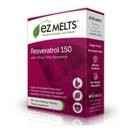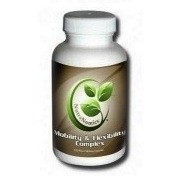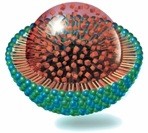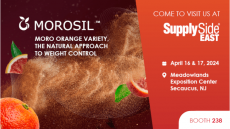Special edition: Innovations in delivery systems
Keep a weather eye on regs when deciding on new delivery modes, experts say

Delivery system innovation has come in many forms. From early tinctures and tableted powders the category extended into clear gel caps, coated soft gels to protect delicate ingredients in their passage through the gastric juices and microencapsulation to buffer harsh tasting or highly reactive ingredients or to make oil-soluble ingredients dispersible in water.
More recent delivery systems that developers have tried for dietary supplements have included gums and other chewables, lozenges, dissolving films and melting tablets. These delivery modes have as their core idea making the active more pleasant to ingest. And that last verb is important, as the definition of a dietary supplement in the Dietary Supplement Health and Education Act of 1994 includes the phrase “intended for ingestion.”
Not a gray area, but a bright line
At the far end of this number line lie delivery systems that represent the cutting (bleeding?) edge of dietary supplement delivery system innovation: transdermal patches, liquids meant to be held for a time in the mouth, nasal sprays and mouth sprays that imply either buccal or sublingual absorption of active ingredients. Does employing one of these modes mean that a product developer has entered a gray area in the regulatory scheme?
“I don’t think it’s a gray area at all,” Justin Prochnow, a Denver-based attorney with the firm Greenberg Traurig who counts many dietary supplement companies among his clients, told NutraIngredients-USA. “It goes back to the very definition of a dietary supplement in DSHEA. It has to be something intended for digestion.”
Improved digestion
Many of the delivery systems that instruct the user to hold the product in the mouth are intended to make it more available for digestion, said Jose Rocca, PhD, vice president of R&D at Solara Labs, a Miami, FL-based company that offers a melt-in-the-mouth technology called EZ MELTS.
The ‘rapid oral disintegrating tablets’ melt in anything from 10-20 seconds to about a minute depending on the ingredients and the dose. While this might seem like a niche market, there is a clear opportunity to target consumers that don’t like swallowing pills, the elderly, bariatric patients and children, Rocca said.
However, meltable tablets are also appealing to people looking for nutrition on the go, as you don’t need to take them with water, added Rocca, who is adjunct professor of pharmaceutics at Nova Southeastern University and the former boss of the solid dose R&D department for Kos Pharmaceuticals/Abbott Laboratories.
"The EZ MELTS technology allows the nutrients to quickly go into solution in the oral cavity, facilitates administration, and makes nutrients immediately available for absorption,” he said.
But he was careful to note that this does not imply absoption in the mouth, rather that it makes taking pills more pleasant and improves compliance. It’s an issue that pharamceutical companies have struggled with for years, namely how to convince patients to reliably take their medicine.
“This system originated in the pharamceutical sector and now we are bringing it into the nutraceutical sector. People really like the delivery system but there is a balance between technology and cost. We are bringing this from pharma where cost is not an issue into nutraceuticals where cost is important. We have achieved that balance with EZ MELTS,” Rocca said.
The popularity of the system means that Solara Labs has been approached by many players who want to use the technology with a lot of different ingredients. That presents some signifcant challenges when working with nutraceuticals, Rocca said.
“In the pharma sector every product is physically and chemically standardized. When you have no history of how the product behaves—its particle size, compressability, fluidity—it makes it very difficult for use in a melt product,” he said.
Rocca said Solara has worked around many of the limitations of the system, but the No. 1 limitation remains taste. Highly bitter ingredients, which includes many polyphenolic compounds, are unsuitable. Another issue is products that might require a large dosage of the active ingredient, in which case the dissolving phase in the mouth might be unpalatably long.
In any case, though, he emphasized that the system is meant to address the issue of pill fatigue, not to change how the active ingredients are absorbed. That is still meant to happen in the GI tract. And he believes that some of the promoters of other delivery systems mentioned above are just blowing hot air. The claims of buccal or sublingual absorption might might resonate with some consumers seeking a product with a “new and improved” image, or who are aware of the poor absorption profiles of some popular nutraceutical ingredients. But for Rocca, there’s no there there.
“It’s just marketing language. They don’t have any data. If it were a pharmaceutical, you would have to prove that your active ingredient can be absorbed in a sublingual or buccal way. And they haven’t done that,” he said.
Enforcement history
And even if these promoters did have the data, they would be treading a dangerous path as far as the regulations are concerned, Rocca said.
“If I do make a claim that my component does have this absorption in the oral cavity or sublingually, then I get into regulatory issues. The whole pharmacokinetics would change. Then the pharmacodynamics will change, too. Then I get into more of a pharma-type claim that will deviate us from our nutraceutical path,” he said.
While policing the development of delivery forms has not been a hot button issue recently for FDA, there is a history of enforcement on this issue, Prochnow said. Warning letters to Maxam Nutraceutics in 2010 and Vibrant Life in 2013 both specifically mentioned those companies’ use of non-compliant delivery modes.
“Only products that are intended for ingestion may be lawfully marketed as dietary supplements. Topical products and products intended to enter the body directly through the skin or mucosal tissues, such as transdermal or sublingual products, are not dietary supplements,” FDA wrote in the Vibrant Life letter.
“If you are using one of these delivery technologies you have to be aware that there is a distinct possibility that you will come to FDA’s attention,” Prochnow said.
Life cycle management
One of the big reasons for delivery form innovation is to manage a product’s life cycle, Rocca said. New delivery modes can give rise to new patents, and can keep the flood of me-too products at bay for a few additional years. And along those lines, there are plenty of options open to developers that still comply with the regs. Companies have experimented with a variety of modes of boosting the bioavailability of hard-to-absorb compounds including liposomal systems, binding active ingredients to phospholipid carriers or employing colloidal delivery systems.
Another area of innovation has come in the form of microencapsulation. Taking this approach can deal with taste issues and can protect highly reactive ingredients such as vitamin C or iron, and can help tailor where in the GI tract ingredients are made available for absorption, said Winston Samuels, PhD, founder of Maxx Performance Inc., a microencapsulation specialist.
“It is a technology that has been perfected over the years. Early technology could only deliver 25% to 50% actives. With more modern technology we can deliver up to 95% actives. We can customize the functionality the end user wants,” Samuels said.
“The difference with these other technologies is that absorption is so quick. How do you control that?”
















